Tamaracks, Revisited
Searching for roses in a bog
Once again, I walked into a bog in search of tamaracks. I suppose I’m making this a habit.1 Though it was a different bog and a different season and we’re all entitled to have a favorite tree, aren’t we?
This time there was no smoky gold beckoning me closer; the freshly sprouted needles were as bright green as a fern. It’s easy to overlook changes in an evergreen conifer—the growth of a hemlock or pine is invisible to most who wander past—but the tamarack always has something going on. It’s a tree that rewards you for stopping to consider it, season after season. After a bare-branched winter, merely growing new needles isn’t impressive enough for this deciduous conifer, so it pulls out all the stops with its cones.
That’s why I was headed into a bog in the Blue Hills in late May.2
Tamarack cones look like tiny rosebuds and for a brief time in spring, they also are the color of roses—a purplish red that seems more fitting for a berry than for a cone. As they mature, the vibrant hue fades to brown, which is a pity because that red would be striking against the yellow needles in late fall.
There were no cones on the first tree I came across, but that didn’t surprise me. The day before, while building stone steps nearby3, I asked a friend who was headed to the bog for a tamarack report. He returned an hour or so later with a photo of tan-colored rosebuds and noted he could only find cones on the older trees.
With that in mind, I focused my attention towards the larger tamaracks and peered upwards, hoping for a hint of color. Though last year’s cones were plentiful—and beautiful in their own right—I could not find new growth. Eventually, I turned back. Perhaps the trees needed a few more weeks of warmth. After all, the previous night had seen temperatures dip to just a few degrees above freezing.
Over the next week, I couldn’t get the thought of rose-colored cones out of my head. Another excursion up north was out of the question, so I set my sights closer to home. Perhaps being 300 miles south would mean my local tamaracks were a few weeks ahead of their Northwoods cousins in the growing cycle—but not so far ahead that the color I sought would already be fading.
On Memorial Day, I continued my quest at Volo Bog—the quaking bog in northern Illinois where I stood in awe of the smoky gold last fall. I hustled along the empty boardwalk through the marsh zone until the floating metal beneath my feet transitioned into wood planks. The branches of the first tamarack were well above my head, so I squinted into the sun and made a silent appeal that my visit would not be in vain.
To be clear, any trip to a bog is a worthwhile one. However, two trips in under ten days is probably above the average visitation rate, so three would put me dangerously close to bog fanaticism. I had directions to a third bog already mapped out, but I really didn’t want to have to use them.
There was no telltale rosy hue in the branches of that first tree, so I slowly and methodically began scanning the branches of all the tamaracks lining the boardwalk. It took a dozen paces before I could breathe a sigh of relief. The red cone was too high for me to get a good look, but the color was distinct enough that I knew I hadn’t missed the spring window for roses, after all! And when I finally rounded the corner to the open water center of the bog, I was rewarded with a branch at eye level, laden with the most beautiful cones I had ever seen.
As I basked in their ephemeral vibrance, voices drifted down the boardwalk—the high-pitched exuberance of a little kid pointing out every leaf and the mellow responses of parents reading interpretive signs aloud. I lingered by the cones, waiting for the family to turn the corner so I could point out the unique shape and color before continuing on my way. The short legs and curiosity of a budding naturalist4 made my wait longer than I expected, but each new overheard exclamation about a plant or bug made me more invested in sharing the beauty of the tamarack cones with a fellow bog enthusiast.
The group finally came into view, heralded by the child’s chant of, “Eye of the bog! Eye of the bog!” I pretended to be deep in concentration while I snapped a photo of the open water.5 Then, as casually as I could manage, I made eye contact with the parents and said, “If you like tamaracks, there are great examples of the rose-colored cones on the branch right behind you.”
I continued down the boardwalk before they felt any pressure to strike up a conversation with me, however, the dad’s voice was still clear as I lost sight of them: “Let me lift you up so you can get a better view!” I didn’t wait around for the child’s reaction, but I hope he’ll fondly remember the spring day when he walked into a bog and found roses.
For a refresher on what happened when I last walked into a bog:
This walk into the bog also turned into a rather successful birding hike:
Birding in the Blue Hills
I hit a turning point in my birding journey last week in the Blue Hills. I didn’t suddenly become an encyclopedia of songs and markings, but a small spark of confidence flared inside me as I hit a hot streak of successful identifications.
This re-routed section of the Ice Age Trail is due to open in late August with a boardwalk through the bog, so keep the Blue Hills in mind if you’re looking for somewhere to view the fall color of the tamaracks!
Why hiking in the Midwest is great for aspiring naturalists:
Midwest Hiking for Aspiring Naturalists
If you live in the Midwest and enjoy outdoor recreation, you have almost certainly heard some variation of the following from an acquaintance justifying why they don’t venture into nature:



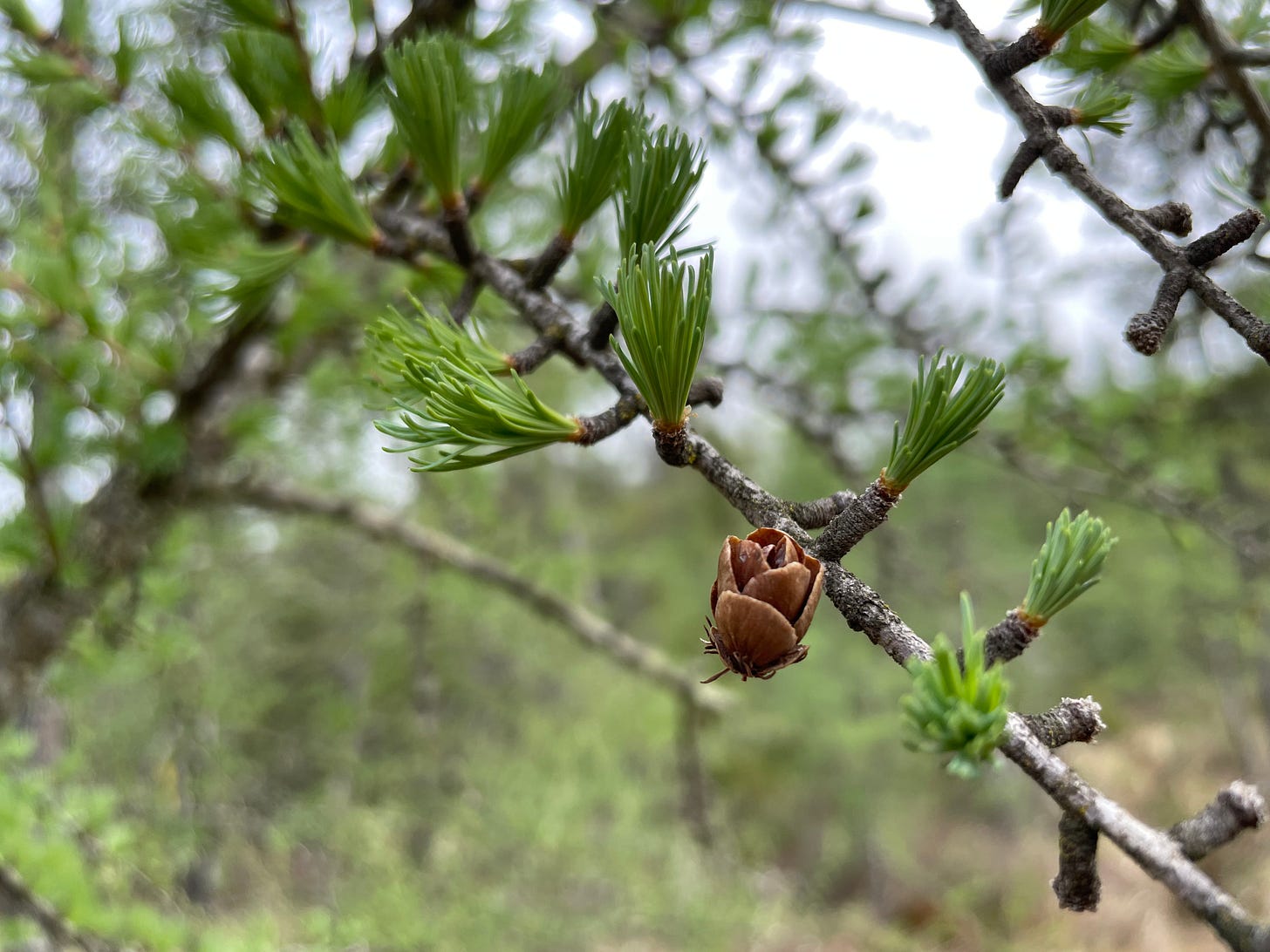
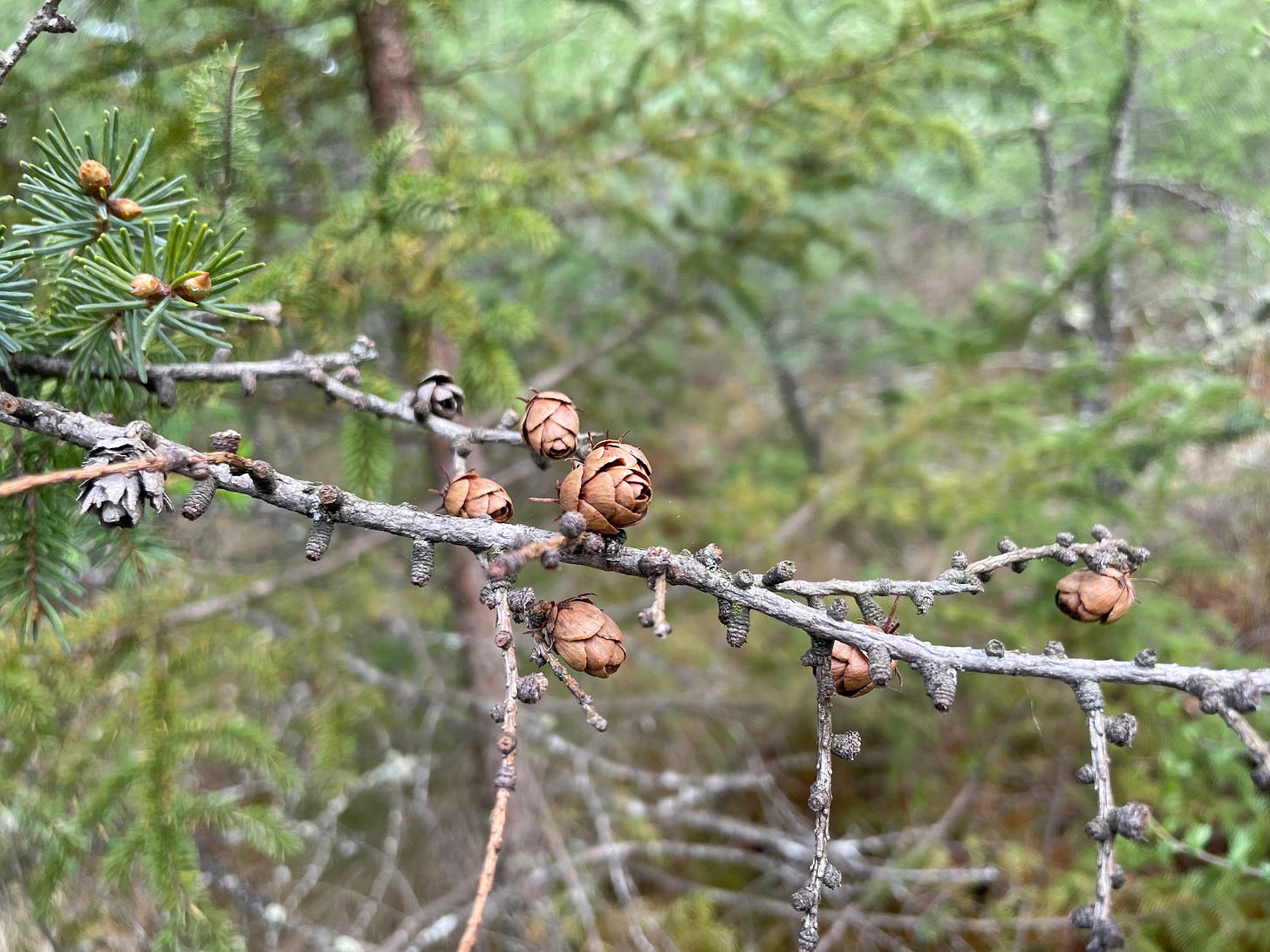
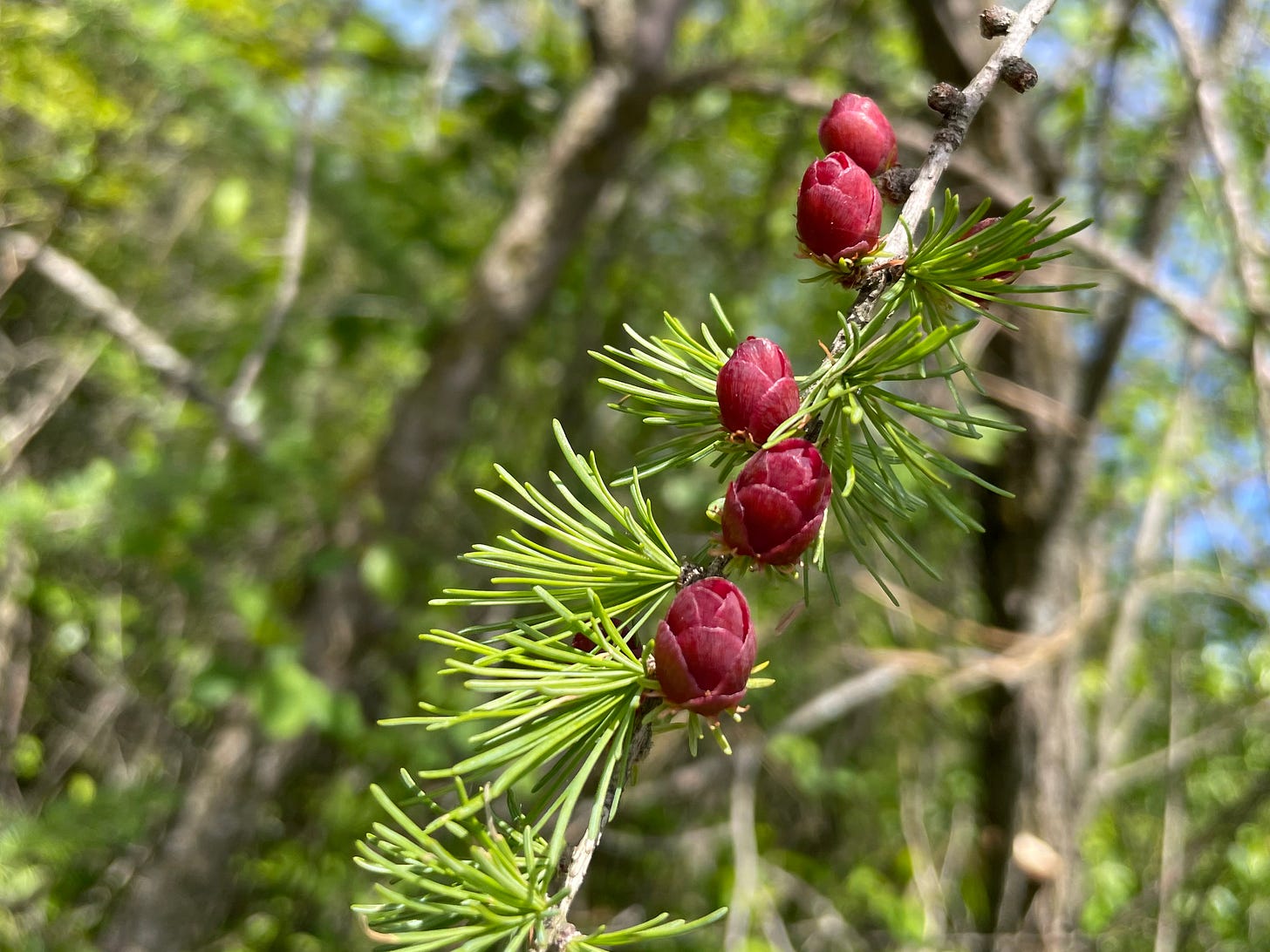
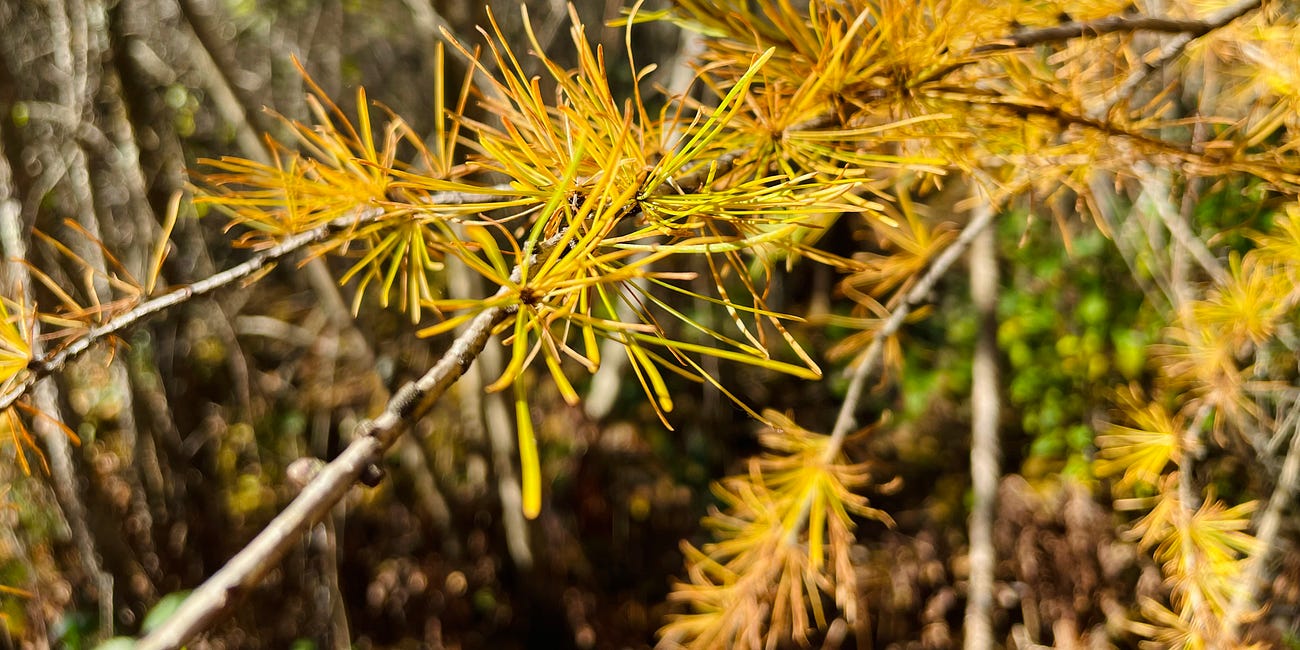
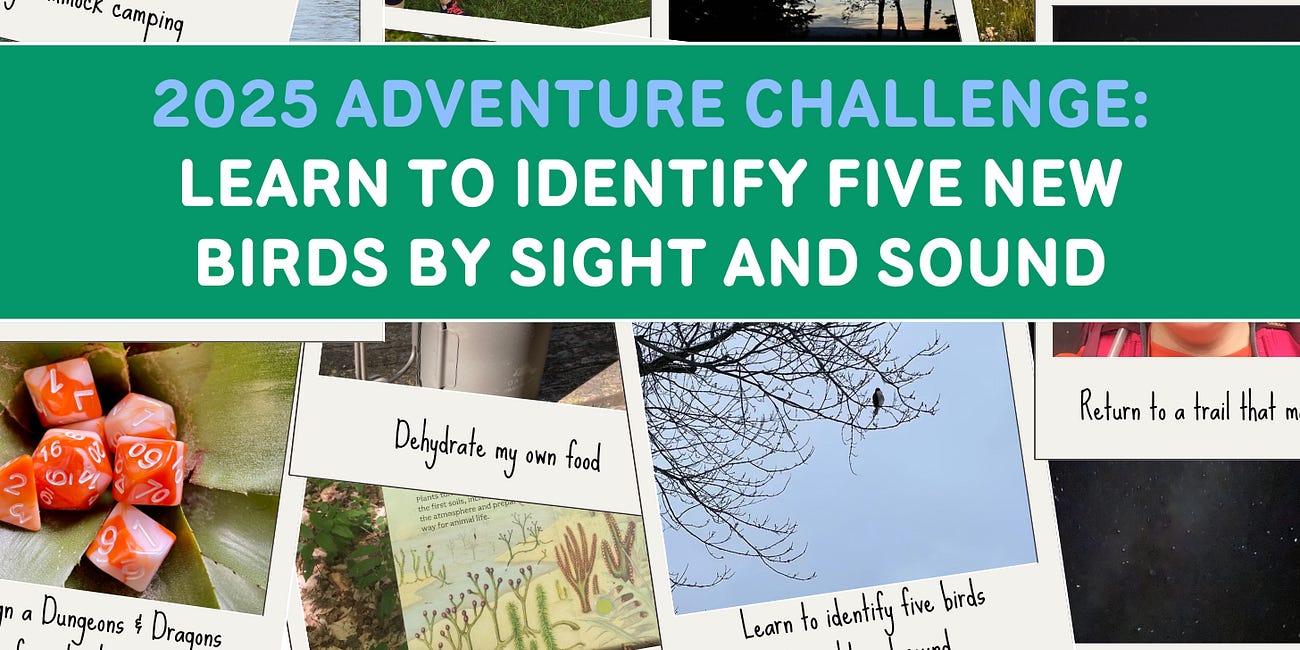
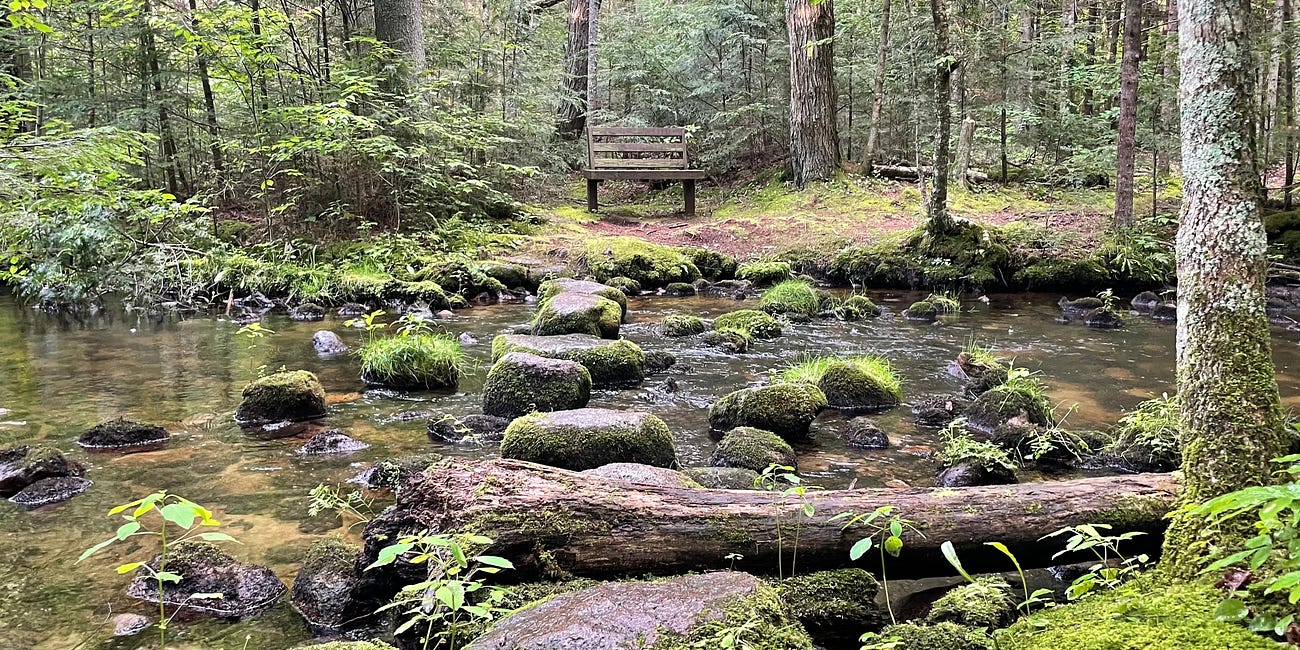
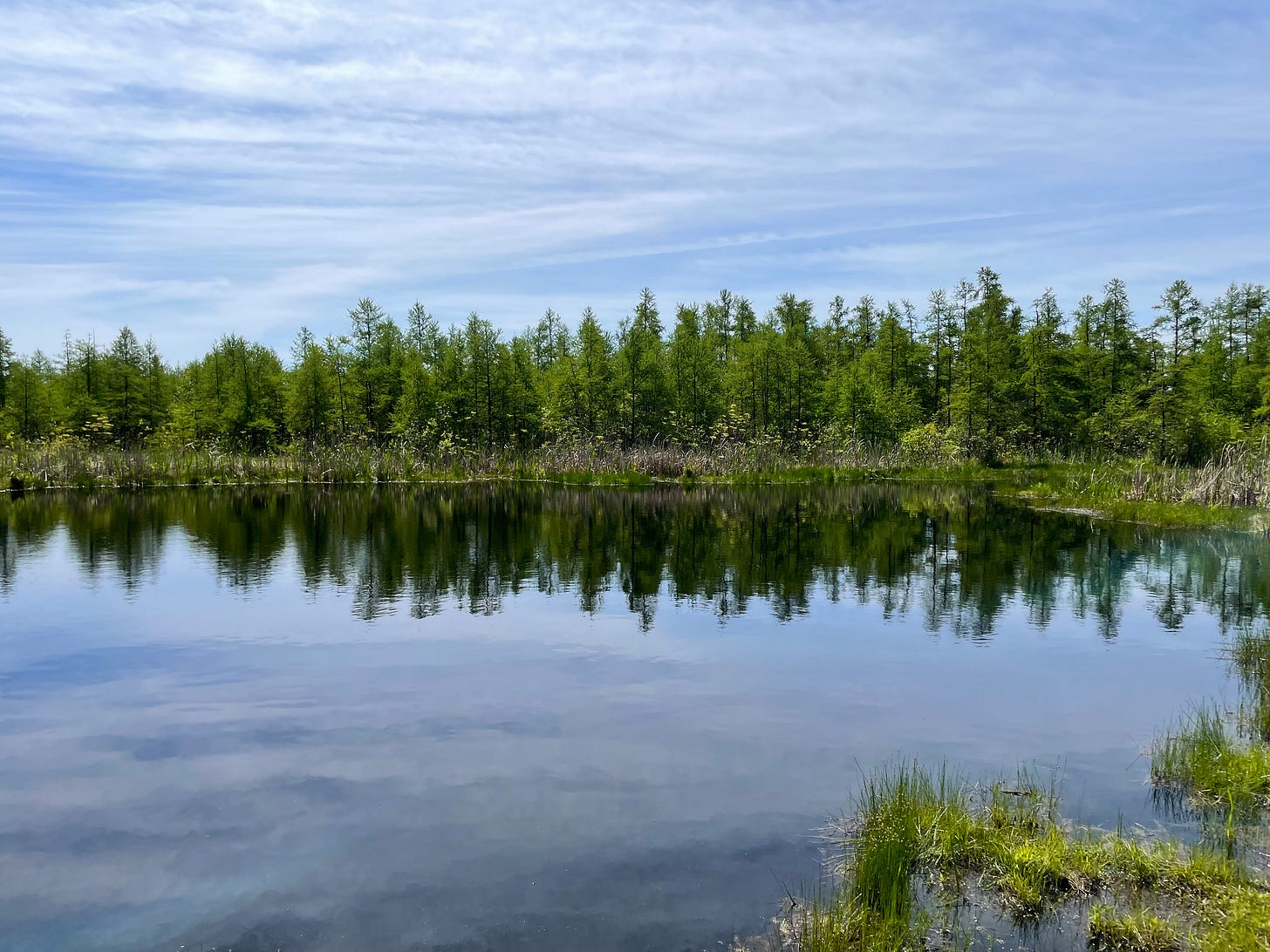
This was such a nice story, and those cones are beautiful. I've never seen anything like that!
I really liked the details about wanting to tell the family and waiting but also trying to appear casual and then getting away before a longer conversation could happen. I found that very relatable; I've done all of those things on hikes!
The cones are beautiful indeed... I love how you pointed them out to the family - this kind of small story is what helps me (kind of) keep my faith in humanity.